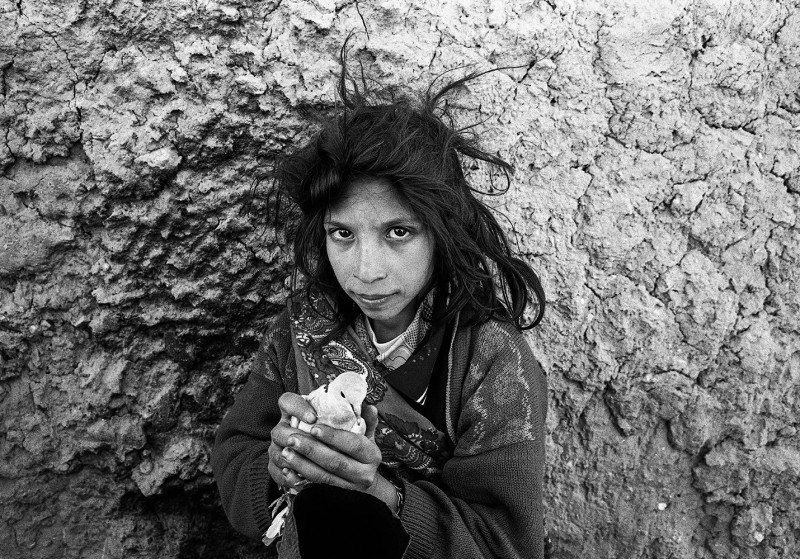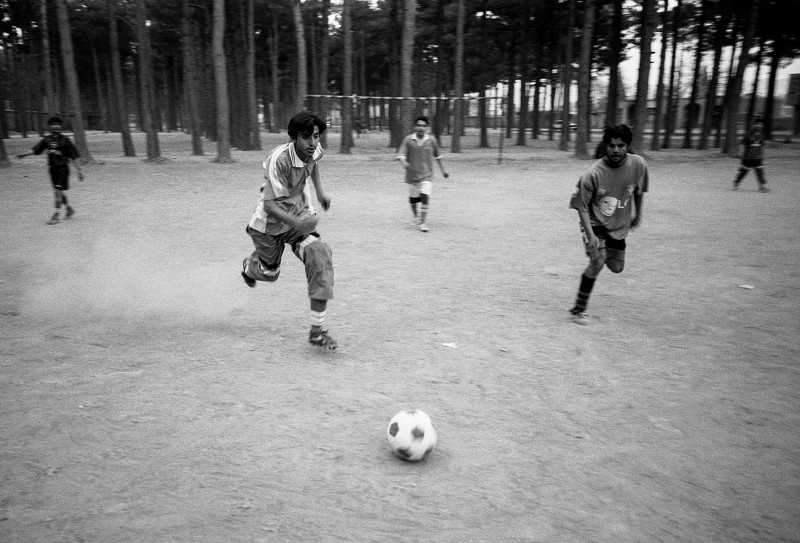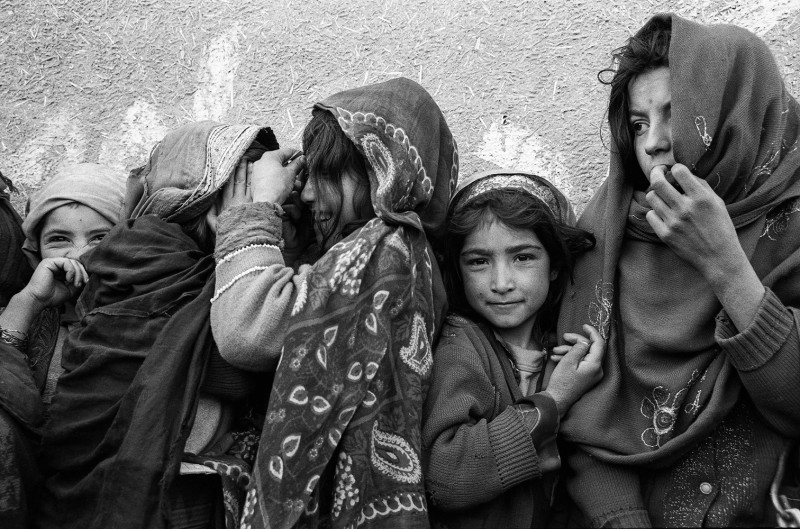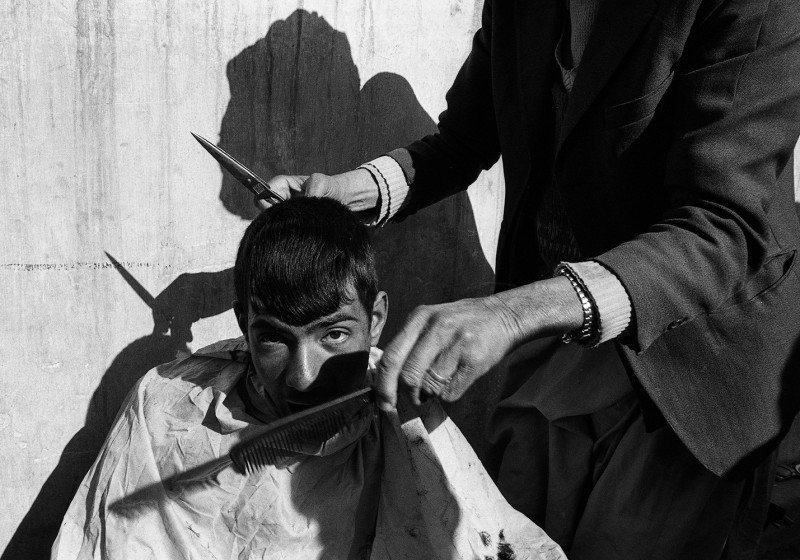After the Fall
After the Fall
Stewart Weir
February 16, 2023
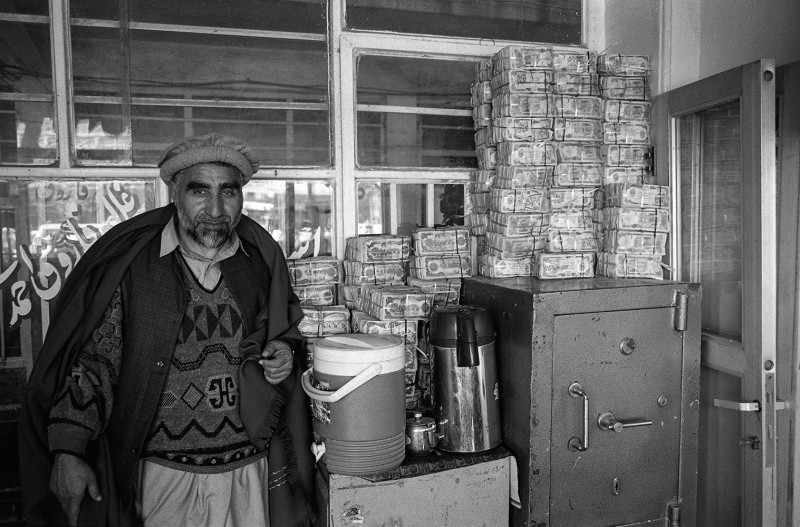
Was there a particular reason for your photographic trip to Afghanistan?
Stewart Weir: In late November 2001, shortly before the collapse of the Taliban, I got a call from the organisation War Child asking whether I was available for a month in January, to document the creation of a field bakery in North East Afghanistan. Identified by War Child as one of the most desperate places for aid and food production at the time, North Afghanistan was an area that was experiencing a critical state of crisis (as it is today). We flew from Manston to Herat via Turkmenistan, in an old Russian transport plane, literally filled to the roof with a Landrover, generators and a mobile bakery, plus supplies. I was asked to document the creation of the field bakery. During my three week stay, I walked the streets of Herat with an interpreter.
What did you want to show with your pictures?
I had no objective other than to document daily life on the streets, together with some street portraits to produce a set of images, that captured a few weeks in the first month of 2002. There were a lot of smiles at that time. There was a kind of normality of daily life that reappeared after years of fighting. The end of the Taliban created a more thriving market selling a greater range of goods, for example. For girls and women, there was a hope that they could become better educated and in turn have a job. However, just under the surface there was always a fear that the Taliban would come back.
People are the focus of your photographs; what do the people in your pictures tell you/us?
Fears and dreams. The children often looked far older than their actual years. Anticipation of an uncertain future, an opening of a society that enabled people to work and earn money to feed their families. We are all the same regardless of belief and politics. Looking back at the images I wonder what became of the children. Most of all I’m intrigued to know what happened to them. For many years I would have liked to return and find some of them. Unfortunately events in Afghanistan makes that look like a near impossibility. Of all the countries I've travelled to, Afghanistan is by far the most amazing, with a people whose warmth and hospitality I have not often encountered.
Which camera did you use for your series and where did your decision to shoot in black and white come from?
I first picked up a camera in the late 70s and didn’t become serious about a career until the early 90s, so during this period I was greatly influenced by great photographers like Josef Koudelka, Édouard Boubat, W Eugene Smith, Robert Doisneau, Elliott Erwitt, etc. Until recent years, my preference was black and white images, so back then it was all I really shot. I used a Leica M6 and a 28mm Elmarit (V3), with a warm up filter together with Kodak Tri-X rated at box speed. So much has been written about black and white images (their pros and cons), that I won't add to it other than to say that, for me, it removes the distraction of colour and adds a timeless layer of ‘something’ I've never found a word to describe.
Stewart Weir+-
Stewart Weir's life-long love of photography began in 1978 after being given a camera by his father. In his early thirties (1993), he gave up a job at an estate agent’s to become a freelance photographer. In 1995 he began his first long-term photo essay about his local football club – Brighton and Hove Albion FC – titled More Than Ninety Minutes. It was published in 1997 and exhibited throughout the UK. Past photo essays also include Tokyo, The Sleeping City (2002), Krung Thep – A Street Portrait (published by Art Deco Magpie in 2022), Cantium (ongoing since 2020) and Brighton Beach Lovers (ongoing since 2000). More



